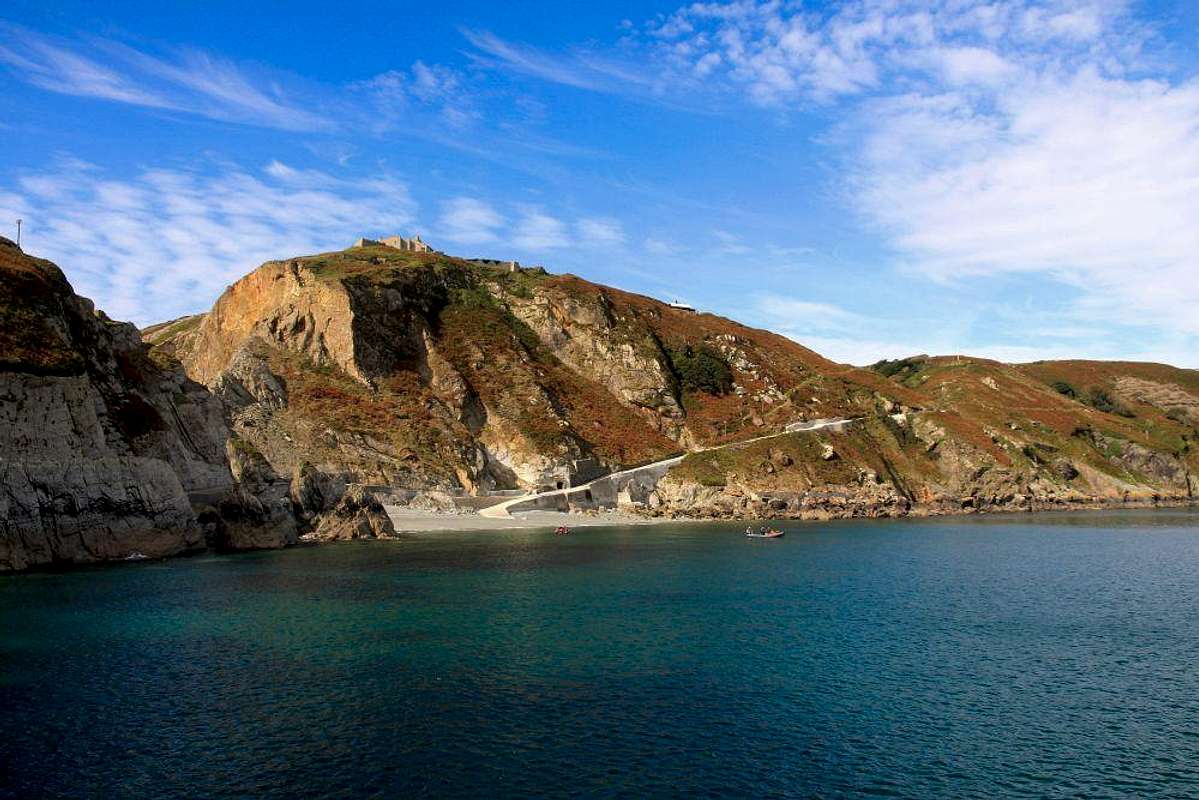On the 24th of December 1869, after spending a night of merriment in the Marisco Tavern, Lundy Island’s finest, or more accurately, only, hostelry, Samuel Jarman unwittingly ruined his family’s Christmas by losing his way home and walking straight over one of the island's many cliffs. The effects of this error were to be terminal. In spite of this somewhat inglorious end, his family saw fit to commemorate his death, and so, his nephew Captain John Lang of Appledore, installed a large, black headstone under the island’s Old Lighthouse dedicated to his memory. The memorial however, perhaps says more about the Captain than anyone else and those who view it might get the impression that Jarman was merely a bit player in the tale of his own death, for it is Lang’s name that is carved boldly in capitalised gothic text on the top of the tablet, not his.
These people, for better or for worse, are my ancestors and it is with a strange mixture of uneasiness and comfort that I still see the vices of drunkenness, clumsiness, self-promotion and arrogance prevailing, to a greater or lesser degree, in the current generations of my family; the sentiments of Larkin’s This be the Verse have clearly been played out over the centuries.
It’s with this knowledge that I made landfall, disembarking from the MS Oldenburg to be greeted with a scene that was more akin to some Ionian island than some windswept rock in the middle of the Bristol Channel. It had been a remarkably smooth crossing, with gannets and porpoises making sporadic appearances along the way. This was my first visit to Lundy and it is with a touch of irony, that my first stop should be the infamous Marisco Tavern. We were to spend a lot of time here over the coming three days.
My companions on this trip were my usual climbing partners, Tom and Steph. We had been talking of taking a trip to Lundy for over a year now, but the catalyst finally came this August, when Tom, who is a writer and photographer by profession, was offered a deal on crossing fees and accommodation in return for an article on the climbing there (it is to appear in Trek and Mountain sometime next year). To climb on Lundy is something that I’ve wanted to do since my introduction to the sport; to me, its remoteness and isolation are inherently appealing. Yet, despite its inaccessibility, it has always had the ability to remind me of its existence, appearing occasionally and unexpectedly as a misty apparition on the far horizon, seen from my usual haunts of Pembroke and Gower.
It was unfortunate therefore, that my enthusiasm, and that of my companions, was to be tempered by the glacial pace at which our luggage, which contained all our ropes and protection, was delivered to the campsite. A lesson learnt for next time is that our gear will board the boat as hand luggage. It was evident that owing to tides and limited daylight, that the day’s climbing would be limited to one or two routes at most. And so off we set to explore the island's West Coast and the Flying Buttress.
The Flying Buttress, is by any standard, an impressive piece of lithological architecture. A giant leaning totem of orange and pink granite, it appears to have collapsed into the mainland forming a large angular arch through which the sea lazily rolls, throwing up froth and foam where it strikes the rocks around it. Sitting above it are the remains of an old gun placement, which still retains a couple of ancient rusting cannons and an assortment of decaying buildings. The placement makes an ideal position to take stock, gear up and prepare for the coming frivolity. We had decided to leave the delights of the buttress itself for another day and instead concerned ourselves with the steep landward cliff known as the Main Wall. What followed was the usual difficulty of identifying routes and features on an unfamiliar sea cliff, which because of their very nature, cannot be viewed at anything approaching a useful angle. Eventually we settled upon a Severe grade route called Alouette, an easy introduction I felt, to what the island had to offer. And so up a steep corner I set, accompanied by an unfamiliar touch of anxiety, haunted perhaps, by some repressed ancestral nightmare. What I found was a surprisingly challenging climb; the subtle differences in the rock’s grain and form made placing protection difficult and unnerving and by the time I’d finished the route a feeling of slight uneasiness had found me. Fortunately, time intervened and this was to be the only climb of the day.












Comments
Post a Comment